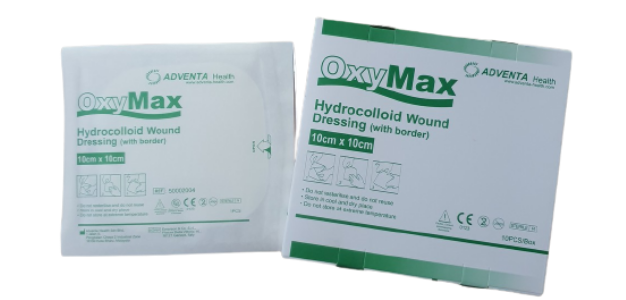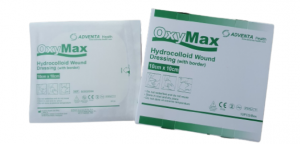
5 things you should know about hydrocolloid dressing
What is Hydrocolloid dressing?
hydrocolloid dressing is an advanced wound dressing products that contained pectin, carboxymethylcellulose, and polymers. It’s opaque or transparent dressing that provides moist environment to promote wound granulation whilst and preventing maceration in the peri-wound. The aim is to absorb wound exudate rapidly and promote wound healing. This will keep the wound bed hydrated for proper wound healing, does not stick on the wound and also prevent allergically.
Below are 5 things you should know about
#1 Who is selling Hydrocolloid dressing
In Malaysia there are some different sellers and brands who are promoting the products. belows are the common and famous brands in Malaysia market. There are medical supply company which supplies several medical products.
1. Oxymax
2. Kendall-Covidnt
3. Smith & NepHew
4. First aid- White Cross
5. Osmocol
6. Duoderm- Convatec
#2 The Product specification from each brand
You might be wondering there are many brands in Malaysia but how and why should choose them? Below is the product specification from Kedall, Smith & Nephew, osmocol and Oxymax. The specifications are included the spec, features and strength. Now let’s look at it.
1. Oxymax Hydrocolloid dressing
Specification
• Made by CMC with adhesive elastic wafer
• Excellent elastic
• Have quality standard CE. CE Marketing is a certification mark that indicates conformity with health and safety.
• Doesn’t contain animal gelatin
• Halal and MDA Certification.
• Size : 10 cm X 10 cm
• Packing of 10 pcs
Features
• Light or moderate exudate wounds
• Made of absorbent colloidal materials with adhesive elastic wafer.
• Granulating and epithelializing wounds that are draining low to moderate amounts of exudate.
• Comfortable for extended wear time.
Strength
• Help to reduce pain at the wound site.
• I to II degree bedsore preventing and curing
• Small superficial burn injury
2. DuoDERM Convatec

Duoderm CGF Hydrocolloid Dressing picture
Specification
• On contact with a moist wound surface, DuoDERM® dressings form a gel that creates an optimal moist wound healing environment.
Features
• Light to moderately exuding wound.
• Easy to use and suitable for managing different stages of wound healing and multiple wound types in a protocol of care.
Strength
• An outer film provides a waterproof barrier over the dressing.
• Provide both thermal and mechanical protection.
• Absorbs exudate to form a soft, moist gel.
• Keep nerve endings moist, which helps to provide relief from discomfort
3. Smith & NepHew Replicare

Smith & Nephew RepliCare Hydrocolloid Dressing Picture
Specification
• Contains a dense concentration of absorbent material in a thin dressing for superior absorption in the management of exuding wounds
Features
• Cohesive properties keep the wound free of dressing residue.
• One-handed application system will not stick to gloves.
• Waterproof and aids in prevention of bacterial contamination
• Top film can be wiped clean easily
Strength
• Dressing hugs curves better and stretches comfortably, with a combination of adhesion and elasticity for maximum wear time, reduced nursing time.
• Beveled edges help keep the dressing from sticking to clothing or bed linens, reducing the risk of leakage
4. Osmocol Sentry Medical

Osmocol® Hydrocolloid Dressing Picture
Specification
• Optimal healing conditions while allowing you to monitor healing progress and reducing the need for unnecessary dressing changes
Features
• Waterproof enabling normal bathing
• Occlusive
Strength
• It’s transparent and provides the ability to monitor healing progress without the need to disturb or remove the dressing.
• A bacteria and water-proof dressing for minor or post-operative wounds making continuation of normal activities of daily living, possible without risk to the wound.
• The slightly acidic pH of osmocol® Hydrocolloid Dressings creates an unfavorable environment for bacteria while imitating the protective acid mantle of the skin.
#3 How to apply Hydrocolloid dressing on wound
• Choose edge-pressed or ultra-thin according to the extent of exudation
• Select suitable dressing according to the wound size, and the dressing should exceed the wound edge about 1-2cm
• Sterile wound with iodine and stick the dressing on when the surrounding skin of wound becomes dry
• Replace the dressing up to the exudation level of wound and saturation level of the dressing after absorbing exudation (generally , replace it 3 to 5 days later or more then 7 days.)
• When the color of it becomes ivory from pale yellow, which indicating it has reached saturation point, it’s time to change the hydrocolloid dressing.
• Replace it if there is any leakage of exudation
#4 Who is the buyer and user?
Buyers
The hydrocolloid dressing normally is supply to Government & Private hospitals. Those government and private hospitals might purchase large quantities from the agent or directly purchase from seller such as Mycare Malaysia.
Users
The Common situation is after post-operation, nurses will apply hydrocolloid dressing on patient’s wound site to prevent leakage of exudation as well as promote wound healing.
#5 Common question for hydrocolloid dressing
• Is there any difference between brands?
YES -There are many difference in structure, flexibility, dimensions, fluid handling properties and probably in other performance parameters
• Are there any side effects of hydrocolloid dressings
Hydrocolloid wound dressings have been in use for some 20 years, and have rarely been associated with allergic contact
• How long can a hydrocolloid dressing stay on?
Generally, last from 3 to 7 days
Above are 5 things you should know about Hydrocolloid dressing. These are the common questions people are searching for.

